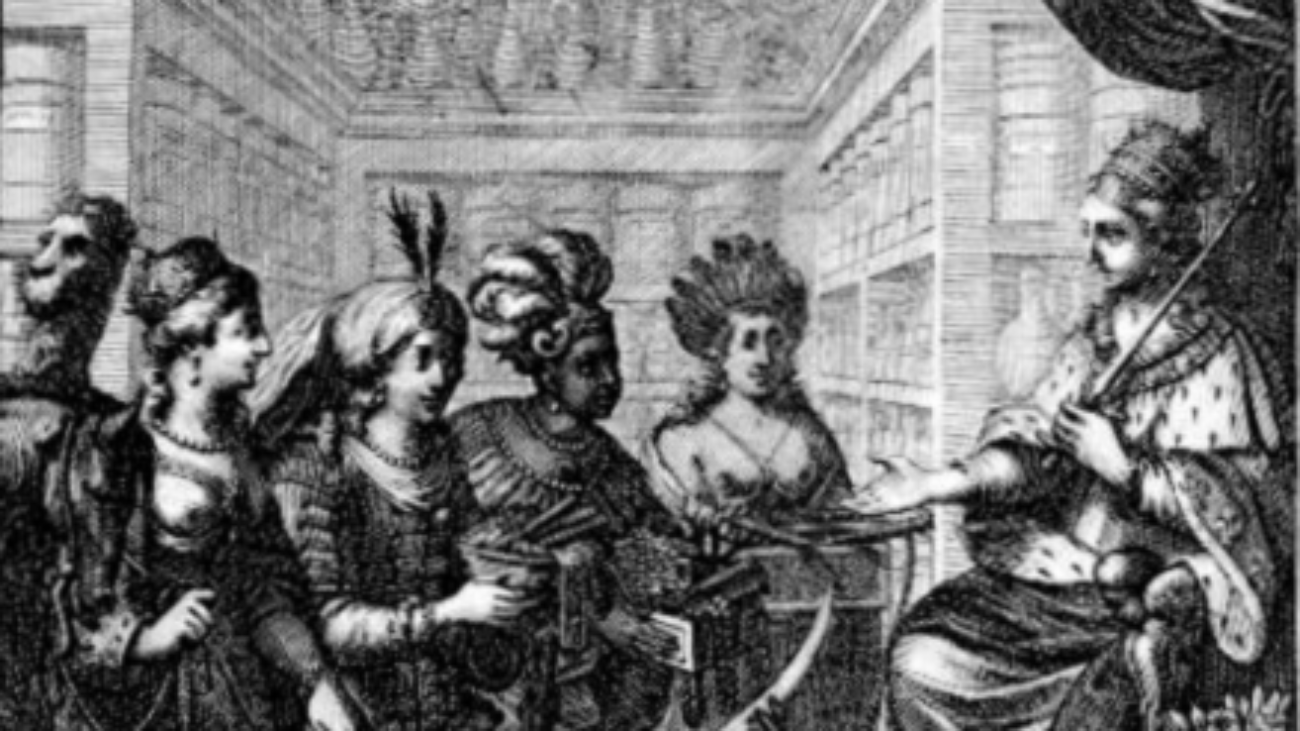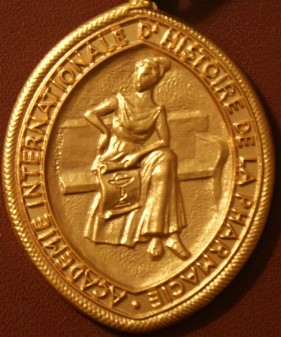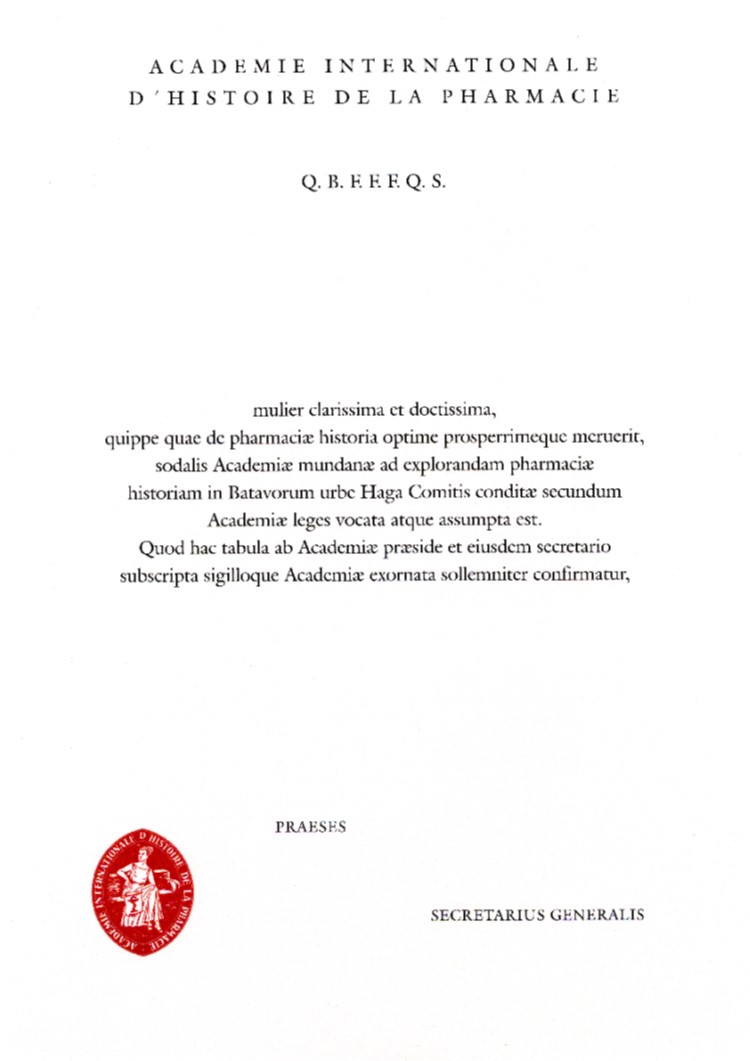 Diploma given to the members |
The diploma is mainly written in Latin, formerly the lingua franca of pharmacy and medicine. It contains some text, some letters and the insignia. The wording is slightly different for men and women, and we therefore have two forms of the certificate. A loose translation of the Latin in English is as follows: ‘The above named is an honourable and most learned [lady], who has demonstrated distinction in the history of pharmacy. [She] is very deserving of membership of this International Academy for the History of Pharmacy. Membership is founded on the Statutes of the Academy which were approved in the city of The Hague in the Netherlands. These Statutes authorise the Academy’s Board to award membership. With the signatures of the President and the Secretary of the same in place, the solemn rites of the Academy are hereby confirmed’. |
|||
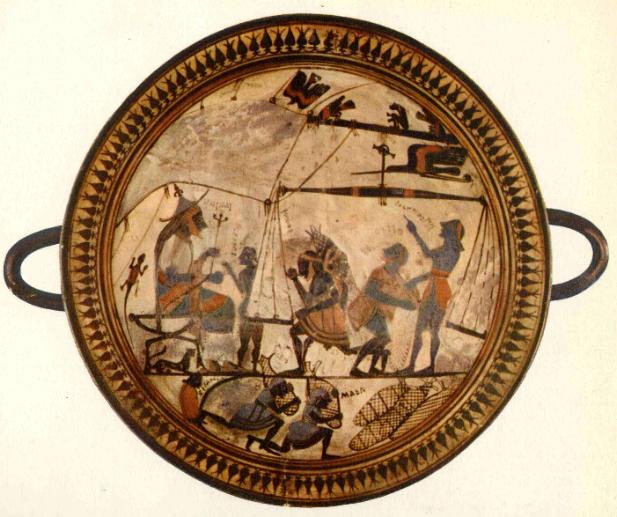 |
At the top of the diploma there appear seven capital letters: Q.B.F.F.F.Q.S. This is the abbreviation of a quotation from Cicero’s ‘De Divinatione,’ written in Rome about 50 BC. The full quotation in Latin is Quod Bonum, Faustum, Felix Fortunatumque Sit. We can translate this loosely as: May the outcome be good, propitious, lucky and successful. Cicero was referring to the Roman people and citizens, but it has been applied to many other groups since. It first appeared on a university diploma at the Caroline University in Prague. The founders of our Academy clearly thought it an appropriate motto for our new members. We hope that for them, membership of the Academy will indeed be good, favourable, lucky and successful. | |||
| Both the diploma and the medal bear the insignia of the Academy. This is a depiction of the goddess Clio, one of the nine Muses, the goddesses of music, song and dance. Her name was derived from the Greek verb kleô, « to make famous » or « to celebrate. » She was named Muse of history, and she was often represented holding an open parchment scroll sitting on a bench.Here she is holding a scroll displaying the Bowl of Hygeia with the Serpent of Epidaurus, the international symbol of pharmacy. The serpent was a symbol of wisdom, immortality and healing, and is drinking a potion from the bowl. It was George Urdang himself who suggested Clio as the Academy’s insignia. He considered that these two symbols (Clio the muse, holding the scroll depicting Hygeia’s cup) aptly illustrated the aims of the academy-history and pharmacy.The medal on its ribbon is the formal symbol of membership of the Academy, and members are asked to wear it at all meetings of the Academy. The final line gives the date and place of award of the diploma. |
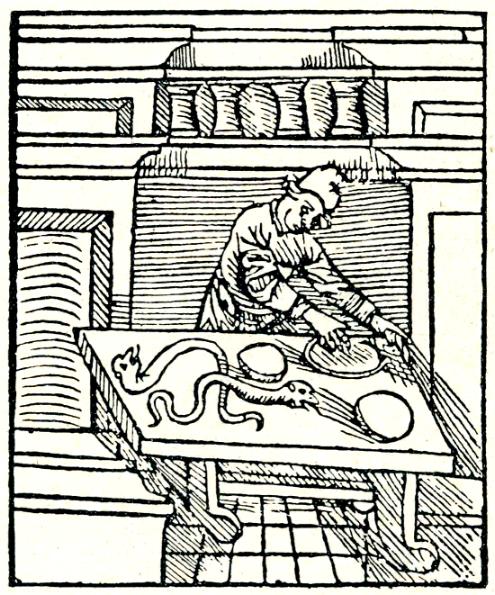
|
|||

